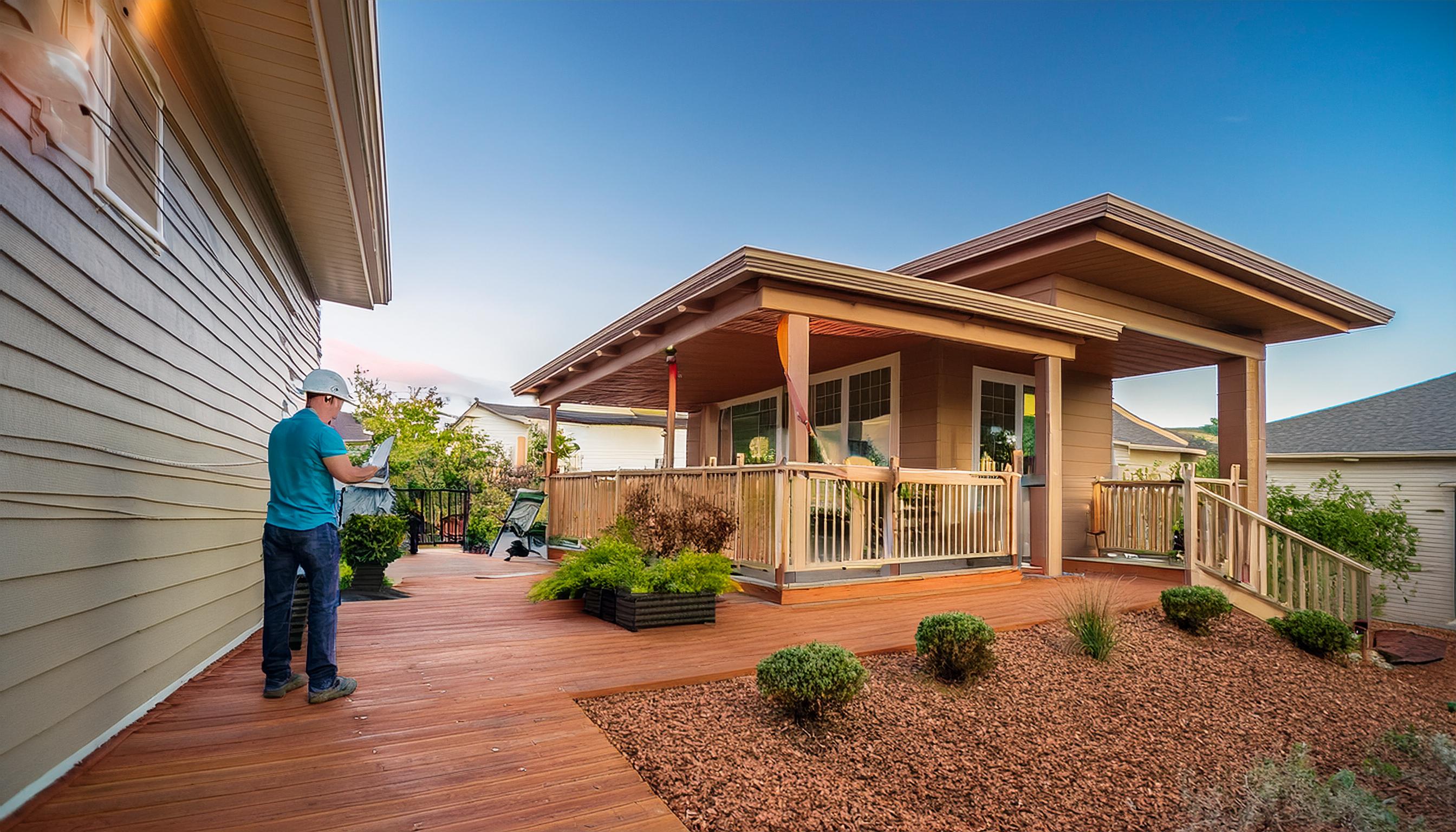What You Need to Know About Your Elevated Deck

Table of Contents
Ever wondered what makes an elevated deck so cool—or how to keep it from turning into a headache? Picture this: an elevated deck is that awesome raised platform—maybe a few feet off the ground or tied to your second story—held up by posts or beams, giving you a perfect spot to grill, chill, or just soak in the view. It’s like a balcony with extra personality, but since it’s off the ground, it needs some TLC to stay safe. That’s where deck inspection and balcony inspection come in, especially with California laws like SB326 and SB721 keeping things in check. Whether you’re dreaming of one or already have one, this is your go-to guide!
As a civil engineer who’s built these beauties (and loves a good deck hangout), I’ve got you covered. By now, you know the deal: an elevated deck is a raised outdoor space that needs strong supports and regular checks—like SB326 inspections for condos every 9 years or SB721 inspections for apartments every 6 years—to keep it sturdy and safe. Stick around, and I’ll walk you through what it is, how it’s built, why safety matters, and how to care for it—all in a way that feels like we’re swapping tips over a cold drink, not drowning in tech jargon. Let’s dive in!
Elevated Deck Basics: What Sets It Apart
So, what’s an elevated deck all about? Imagine stepping out onto a platform lifted above your yard—maybe it’s a cozy perch off your kitchen or a sprawling rooftop retreat. Unlike a flat patio on the ground, this deck’s held up by posts, beams, or even steel framing, giving you that elevated vibe. I’ve designed them for homes with sloped lots or to add usable space where the ground’s uneven. They’re special because they turn wasted space into a hangout zone—think sunset views or a spot for the kids to play below. But that height means deck inspection is a must, just like a balcony inspection, to catch wear and tear early.
From my engineer’s lens, it’s a mini masterpiece. Posts sink into concrete footings, beams span across, and joists hold up the decking—wood, composite, whatever you fancy. It’s sturdy, but weather’s a beast—rain, sun, wind—all hitting hard. SB326 and SB721 call these “Exterior Elevated Elements” (EEEs), and anything over 6 feet up needs regular checks. Build cost? Around $30-$60 per square foot—more if you go fancy—but it’s worth it if you keep it safe with SB326 inspections or SB721 inspections.
Why Deck Inspection Is a Game-Changer for Elevated Decks
Safety’s where it gets real. An elevated deck takes a beating—water sneaks into cracks, rust nibbles at bolts, and rot creeps into wood. I once checked a deck where the railing wobbled—turns out, dry rot had softened the base, missed by a quick look. That’s why deck inspection and balcony inspection are non-negotiable, especially with laws like SB326 (condos, every 9 years) and SB721 (apartments, every 6 years). These aren’t just glances—pros use moisture meters, borescopes, even drills to test strength. The 2015 Berkeley collapse—six lives lost to rot—sparked these rules, and they’re here to stay.
Fact: Studies after Berkeley found 15% of elevated decks had hidden issues—rot, loose hardware, you name it. Skip a deck inspection, and repairs can jump from $500 to $20,000 if it fails. I’ve seen it—a deck in Sacramento cost $15,000 to fix after rot spread unchecked. Regular SB721 inspections or SB326 inspections keep it safe and legal—deadlines hit January 1, 2025, so don’t sleep on it.
Deck Safety Red Flags
- Soft wood: Pokes easily with a screwdriver.
- Wobbly rails: Shouldn’t budge.
- Rusty bolts: Swap ‘em out fast.
Building an Elevated Deck: The Nuts and Bolts
Dreaming of your own elevated deck? It starts with solid bones—concrete footings anchor posts (12-18 inches deep in California), beams (like 4x10s) span the gap, and joists (16 inches apart) hold the decking. I’ve thrown in steel brackets for extra oomph—wood’s classic, but steel’s tough. Waterproofing’s key—flash the ledger where it meets the house, or water’s your enemy. SB721 inspections catch bad seals quick, and I’ve fixed plenty that flunked early checks. Permits? Non-negotiable—cities want drawings to prove it’s safe; DIY skips get shut down.
A 200-square-foot deck might cost $6,000-$12,000—more with glass rails or composite boards. Worth it? You bet, if you maintain it. A good build plus routine deck inspection or balcony inspection keeps it standing—no nasty surprises.
Caring for Your Elevated Deck: Easy Upkeep Tips
Keeping an elevated deck happy isn’t hard—just consistent. Seal the wood yearly—$50 and a Saturday beats a $5,000 redo. Check bolts—rusty ones get swapped fast. I tell folks: slope it 1/4 inch per foot so water runs off, not pools. Between SB326 inspections or SB721 inspections, walk it—soft spots or musty smells mean trouble. I saved a deck with a $200 reseal—next year, the owner skipped it, and rot cost $3,000. Small habits, big wins.
Maintenance Costs at a Glance
| Task | Cost Range | Frequency |
|---|---|---|
| Sealing | $50-$200 | Yearly |
| Hardware Fixes | $20-$100 | As needed |
| Pro Inspection | $500-$1,000 | 6-9 years |
Balcony Inspection vs Deck Inspection: What’s the Difference?
Since elevated decks are EEEs, balcony inspection and deck inspection often overlap. SB326 (condos, 9 years) needs an engineer’s stamp—detailed, no shortcuts. SB721 (apartments, 6 years) lets contractors pitch in—but both dig deep. I’ve used infrared to spot water under decking—caught issues early, saving thousands. Balcony inspection might focus on tighter spaces, while deck inspection covers broader platforms, but the goal’s the same: safety. Data Point: Regular checks cut repair costs by 20%, per insurance stats—huge when rot hits. Deadlines? January 1, 2025—get ahead of it.
Case Study: A San Diego deck I saw passed a DIY check but failed an SB326 inspection—hidden rot in the beams. Fixed for $1,200 instead of $10,000 later. Pros make the difference.
Contact DrBalcony for a professional inspection!
Ensure the safety of your balcony and living space with DrBalcony - We're a Tech Engineering firm that specializes in California SB326 & SB721 balcony inspections. Over 300+ completed projects in California.
Request A Free EstimateClick To CallConnect with DrBalcony
Got an elevated deck on your mind—or need to check yours? DrBalcony won’t build or inspect it for you, but they’re here to guide you to the right pros and answers. Curious about deck inspection, balcony inspection, or those SB326 and SB721 rules? Reach out to DrBalcony today! Got questions? Drop ‘em in the comments below—we’ll answer ASAP to keep your deck game strong and stress-free!
FAQ Section: Top Questions & Answers
My property is well-maintained. Do I really need SB-326/SB-721 inspections?
YES! Even with excellent maintenance, hidden issues can develop due to construction errors, material flaws, or severe weather exposure. Inspections are about ensuring those don’t turn into major problems.
Our balconies were inspected a few years ago – isn't that enough?
Unfortunately, no. California laws mandate inspections on a set schedule, often every 6 years. Deterioration can happen quickly, making regular assessments essential.
Can I use my regular handyman for the balcony inspection?
It’s not recommended. Unless they hold specific licenses (architect, structural engineer, etc.) their inspection won’t be considered valid for SB-326/SB-721 compliance.
What if the inspection uncovers major issues?
First, don’t panic! Early detection often means less extensive (and expensive) repairs are needed. Work with your inspector to prioritize fixes, and explore if they offer repair services for a streamlined solution.
I'm worried about the cost of inspections. Are there any resources to help?
Start by getting detailed quotes from multiple companies. Factor in that proactive inspections help you avoid even bigger costs down the line due to neglected problems. Some property management associations offer guidance on budgeting for balcony compliance.
